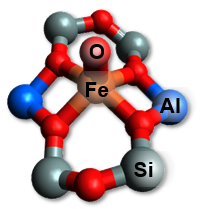Members Login

Channels
Special Offers & Promotions
Here's How Natural Gas is Converted into Methanol at Room Temperature
Twenty years after the technique was developed, a collaboration between scientists at KU Leuven (University of Leuven), Belgium, and Stanford University has revealed the mechanism behind the direct conversion process of natural gas into methanol at room temperature.
 This discovery will have major consequences for the future use of methanol in various everyday applications. The findings were published in Nature. Methanol is among the twenty most commonly used substances in the chemical industry. It’s used to produce antifreeze, fuels, and solvents, but also in various kinds of plastic that we use every day. The substance is made from natural gas (methane). The large-scale conversion of methane into methanol currently involves various steps under high pressure and at a high temperature, making it a process that requires a lot of energy.
This discovery will have major consequences for the future use of methanol in various everyday applications. The findings were published in Nature. Methanol is among the twenty most commonly used substances in the chemical industry. It’s used to produce antifreeze, fuels, and solvents, but also in various kinds of plastic that we use every day. The substance is made from natural gas (methane). The large-scale conversion of methane into methanol currently involves various steps under high pressure and at a high temperature, making it a process that requires a lot of energy.
In the nineties, therefore, scientists developed a more direct method to produce methanol – a process that even produces extra energy. However, scientists didn’t really understand the process. It was a kind of ‘black box’ into which they inserted methane, with a big chance that methanol would come out at the other end.
Twenty years later, postdoctoral researcher Pieter Vanelderen from the Centre for Surface Chemistry and Catalysis at KU Leuven (University of Leuven), Belgium, has unravelled the mechanism behind the process in collaboration with chemists from Stanford University.
The chemical reaction involves adding a specific substance known as a catalyst. Many catalysts consist of zeolites – minerals with a porous framework – containing a specific atom. For the directconversion of methane into methanol, this catalyst is a zeolite with added iron. Professor Bert Sels: “we found that the iron needs to bind to the zeolite in a flat, bound orientation”
“We have provided the first exact definition of what the iron atom looks like that is needed to convert methane into methanol at room temperature. Furthermore, we can describe why this conversion method is so successful,” explains Pieter Vanelderen. This discovery may revolutionize the production of methanol and, by extension, all its derivatives that we use in our everyday lives.
“This breakthrough has happened because we were the first chemists to join forces with biochemists to work on this topic,” says Vanelderen. “Our colleagues at Stanford are specialized in the use of enzymes as catalysts in chemical reactions. Using methods initially developed to study iron-containing enzymes, they managed to take a ‘picture’, as it were, of what it is that happens to this iron-containing zeolite during the conversion of methane into methanol. This information allowed us to determine which specific iron atom was doing the work and to find its exact location in the zeolite.”
Now that scientists know exactly what the catalyst looks like, they can start imitating and optimizing it in the lab. This opens up quite a few possibilities for the future. For one thing, the production of the methanol needed to produce plastic will become a lot cheaper. The catalyst is also useful for the conversion of nitrogen oxides. It could be used, for instance, to clean the exhaust fumes of cars.
more about university of leuven
Media Partners


